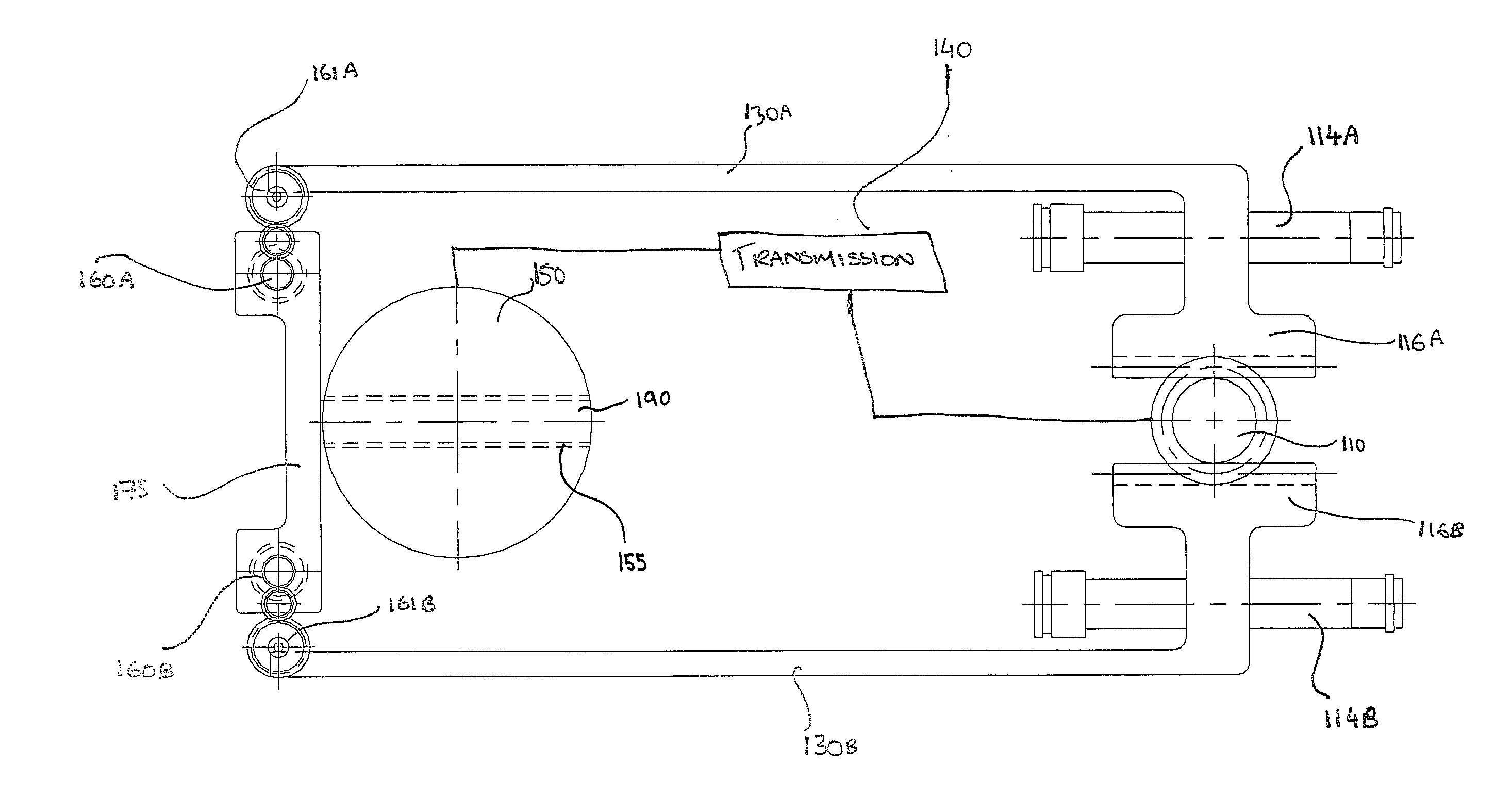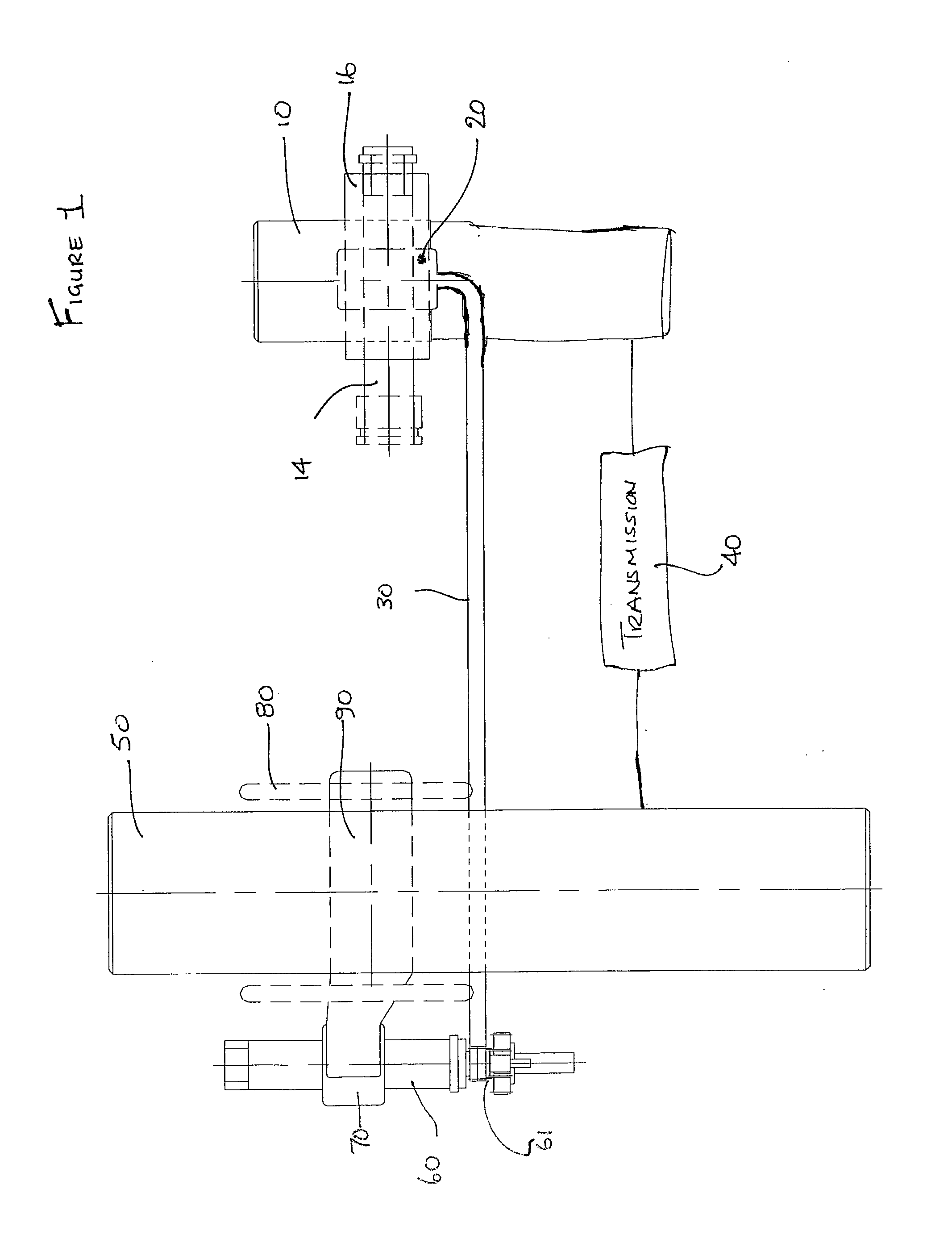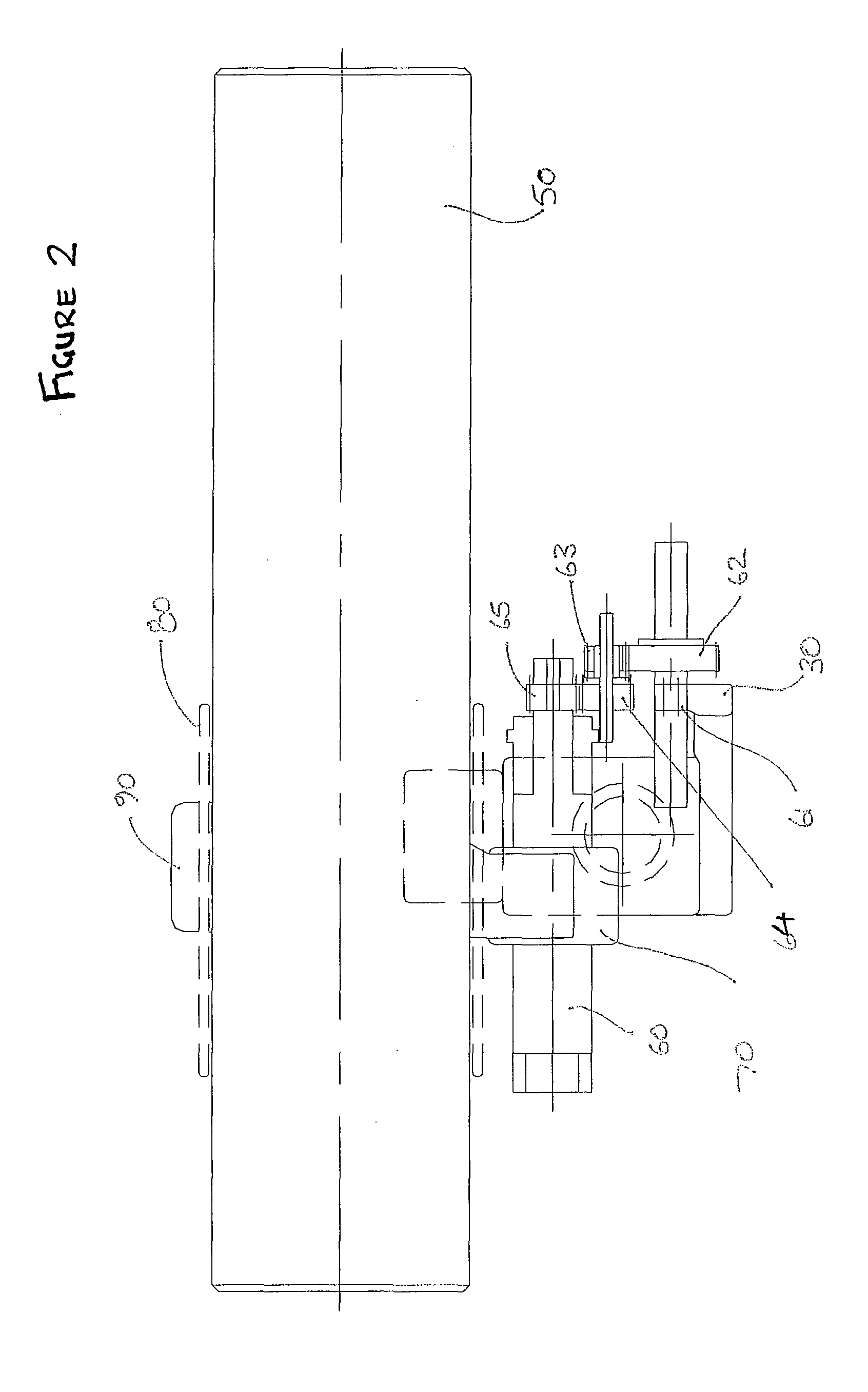Arrestor
a technology of reversing and reversing shafts, applied in the field of reversing, can solve the problems of failure of the system, complete coupling between the drive shaft and the output shaft, and no longer providing the desired output rotation, so as to reduce the length of the pin, the effect of modifying the characteristics of the system
- Summary
- Abstract
- Description
- Claims
- Application Information
AI Technical Summary
Benefits of technology
Problems solved by technology
Method used
Image
Examples
first embodiment
[0049]FIG. 1 shows a schematic view of a system having a rotary output. FIG. 2 shows the system of FIG. 1 when viewed from the left hand side of FIG. 1. FIG. 3 shows the system of FIG. 1 when viewed from the lower side of FIG. 1.
[0050]In the first embodiment, there is a transmission path coupling a drive shaft 10 to an output shaft 50, via a transmission means 40. As shown in FIG. 1, the transmission means 40 is coupled to both the drive shaft 10 and the output shaft 50 such that rotation of the drive shaft 10 results in a proportional rotation of the output shaft 50. The transmission means 40 can be any arrangement of gears or other suitable components which can transmit the motion and force of the drive shaft 10 to the output shaft 50. The transmission means 40 can convert and / or modify the motion and force transmitted from the drive shaft 10 and apply that modified motion to the output shaft 50 as desired.
[0051]As can be seen in FIGS. 1 to 3, in addition to the transmission path,...
second embodiment
[0068]FIG. 4 shows a schematic view of a system having a rotary output. The rotating system shown is similar to that shown in FIG. 1, but with the notable exception that the system of FIG. 4 includes a second arrestor path.
[0069]More specifically, the drive shaft 110 is meshed with and rotated with respect to first and second toothed sections 116A, 116B. The first and second toothed sections 116A, 116B are integral with or attached to respective first and second extension arms 130A, 130B, which are in turn meshed with respective first and second gears 161A, 161B. The first gear 161A is coupled, via a series of gears, to a first leadscrew 160A, which is in turn meshed with a first nut 170A. The second gear 161B is coupled, via a series of gears, to a second leadscrew 160B, which is in turn meshed with a second nut 170B. However, it will be appreciated that the first and second gears 161A, 161B may instead be located at one end of their respective leadscrews 160A, 160B without needing...
fourth embodiment
[0080]FIG. 7 shows a side view of a system having a rotary output. In this embodiment the guideway is a channel 455 extending through the output shaft 450. The pin 490 projects completely through the channel 455 in the output shaft 450, and is attached to or integral with a first nut 470A at its first end 491A, and attached to or integral with a second nut 470B at its second end 491B. Each nut 470A, 470B is meshed with its own respective leadscrew 460A, 460B. Each end of the pin 491A, 491B is coupled to the drive shaft 410 by a different arrestor path. Namely, the first end of the pin 491A is coupled to the drive shaft 410 via the first arrestor path, and the second end of the pin 491B is coupled to the drive shaft 410 via the second arrestor path, such that rotation of the drive shaft 410 results in movement of each end of the pin 490.
[0081]In order for the system to provide an expected rotary output, the movement of both ends of the pin 491A, 491B must be synchronised with the rot...
PUM
 Login to View More
Login to View More Abstract
Description
Claims
Application Information
 Login to View More
Login to View More - R&D
- Intellectual Property
- Life Sciences
- Materials
- Tech Scout
- Unparalleled Data Quality
- Higher Quality Content
- 60% Fewer Hallucinations
Browse by: Latest US Patents, China's latest patents, Technical Efficacy Thesaurus, Application Domain, Technology Topic, Popular Technical Reports.
© 2025 PatSnap. All rights reserved.Legal|Privacy policy|Modern Slavery Act Transparency Statement|Sitemap|About US| Contact US: help@patsnap.com



